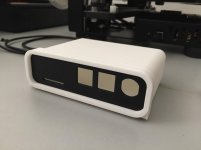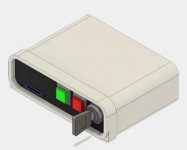NF6X
Veteran Member
Is anybody using the serial port that is present on the FreHD? If so, how? I have the impression that it is a vestigial debugging feature, and I wonder whether there is any means to access it from the TRS-80.
| VCF West | Aug 01 - 02 2025, | CHM, Mountain View, CA |
| VCF Midwest | Sep 13 - 14 2025, | Schaumburg, IL |
| VCF Montreal | Jan 24 - 25, 2026, | RMC Saint Jean, Montreal, Canada |
| VCF SoCal | Feb 14 - 15, 2026, | Hotel Fera, Orange CA |
| VCF Southwest | May 29 - 31, 2026, | Westin Dallas Fort Worth Airport |
| VCF Southeast | June, 2026 | Atlanta, GA |
Is anybody using the serial port that is present on the FreHD? If so, how? I have the impression that it is a vestigial debugging feature, and I wonder whether there is any means to access it from the TRS-80.


Neat. I'm working on what I'm calling "Deluxe FreHD", which is a re-layout of the existing FreHD board to nicely fit a 3D printable case I designed to mimic the styling of the original external hard drives. I'm considering whether to leave out the RS-232 level shifter, implement it as-is, or further modify the design to add a nice external serial port connector to the case.
I've designed and test-printed a first draft of the case, but I have not yet begun work on the PCB. I'll be re-implementing the PCB in KiCad. I've been in touch with Ian to see if he might be interested in selling this to others once I'm done with it, but that will naturally depend on whether it makes financial sense. I don't plan to go into production of this myself, except for my own use.
View attachment 32650 View attachment 32652
I'm considering whether to leave out the RS-232 level shifter, implement it as-is, or further modify the design to add a nice external serial port connector to the case.
It doesn't have the 40 Hz heartbeat interrupt.When Frehd is combined with a Quinnterface it appears that everything in an RS Expansion interface bar the parallel printer port, is now replicated. Or am I missing something?
